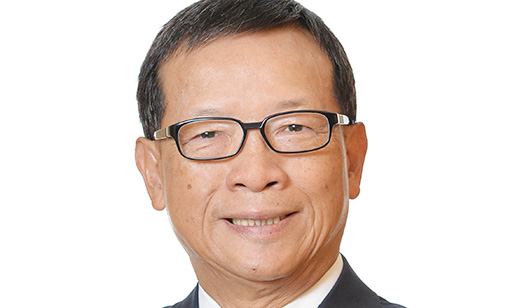Addendum
Hong Kong’s latest airline on track for third quarter 2021 launch
Plans for the Asia-Pacific’s newest airline are well underway, but one thing Greater Bay Airlines will not be doing is competing with the incumbent Cathay Pacific Group said one of the carrier’s senior advisors. Associate editor and chief correspondent, Tom Ballantyne reports.
November 1st 2020
Hong Kong aviation veteran, Stanley Hui, wants to make it very clear the launch of Greater Bay Airlines (GBA), planned for the third quarter of next year, is not an attempt to grab opportunity in the middle of a pandemic. Read More » The former Cathay Pacific senior manager, Dragonair CEO and Airport Authority Hong Kong chief executive told Orient Aviation the vision of adding an airline to the mix of carriers in the southern China greater bay region was born long before the crisis.
“The first time we broached the idea of another airline in Hong Kong was at the beginning of last year. That was well before the riots in Hong Kong and COVID happened,” Hui said. “It is a very long term vision being undertaken.”
 |
In the end, the timing could hardly have been better. “It just happened that when we started the ball rolling it was at the time aviation was in an unprecedented crisis. As a result, resources were being put back into the market in the form of aircraft, in the form of crew, in the form of people who unfortunately have been made redundant by the reshaping exercises of different airlines around the world,” he said.
“Of course, it is coincidental, but the end result is all those resources, which are extremely precious, valuable and difficult to come by, all of sudden are right there to be picked. This project is going to help some people who have been sacrificed by current circumstances. Coincidental, but obviously very helpful.”
Hui is the right-hand man and principal advisor to GBA’s owner, Bill Wong, a billionaire who made his initial fortune in southern Chinese property.
Wong, at 62, is pumping US$258 million into the new airline and already has spent $64.5 million on the startup. GBA will begin with three B737 jets, leased from a European lessor, and plans to expand to 30 aircraft by 2025.
Wong’s Hong Kong-based East Pacific Holdings is heavily involved in property development, but its principal is no stranger to aviation. He set up and owns Shenzhen-based Donghai Airlines, which has been flying for more than 15 years.
It was that connection, said Hui, which prompted the idea of establishing a new Hong Kong airline. “Having an airline in Shenzhen and in Hong Kong is a good thing, particularly as it is in line with China’s development strategy for the Pearl River Delta, now renamed the Greater Bay Area,” he said.
“There always has been close relations between Hong Kong and Shenzhen, in particular, and surrounding cities. The policy to develop the Greater Bay Area, announced in 2018, is a drive to facilitate deeper co-operation between Hong Kong and the Bay area,” he said.
“And of course, as this area continues to develop it will act as a push for the rest of the country. There will be spin-off effects. Hong Kong is unique. With Wong’s background, and we certainly support him, we think the policy will give Hong Kong new impetus to develop.”
Hui wants it made clear GBA is not planning a head-to-head clash with Cathay Pacific. “Honestly, the Cathay group is so big in Hong Kong. Don’t ever dream of trying to compete with a giant. I don’t think anyone entering the market would be able to compete with Cathay. Far from it,” Hui said.
“Look at it from another angle. It’s always a benefit for consumers to have a good choice and that’s really what we are aiming at.” He said the positioning of GBA will be very different from the incumbents, whether it will be Cathay-owned LCC, HK Express, or full-service Cathay itself. “We are aiming to take a position somewhere in between. In terms of marketing, it will be a value carrier, similar to the position (a restructured) Virgin Australia is taking in Australia.”
While still looking for a CEO, the airline has recruited a number of former executives and senior managers from the Cathay Pacific Group, Hong Kong Airlines and Hong Kong International Airport, many of whom have worked with Hui. They include former Cathay Pacific Airways engineering director, Derek Cridland, who has taken a consultancy role to support the airline’s passage to being granted its Air Operator Certificate. A former Hong Kong Airlines president, Zhang Kui, is the chief operating officer of the airline.
In a recent interview with Hong Kong’s South China Morning Post, Wong said at least 300 staff would be needed ahead of the airline’s launch, with the workforce expanding to 500 by the end of 2021 and to 2,500 to 3,000 in five years.
The airline plans to serve major Mainland cities, including Beijing, Shanghai and provincial capitals, as well as second-tier tourism destinations such as Hailar in Inner Mongolia, Urumqi in Xinjiang, the Wudang Mountains and Yichang Sanxia in Hubei. Also on the agenda are services to Japan, South Korea, Southeast Asia and some cities in South Asia. Wong told the newspaper there was a potential customer catchment of two billion passengers: 1.4 billion on the Mainland and another 600 million in Asean countries.
Given China has been leading the way in terms of recovery from the pandemic – its domestic traffic is already pretty much back to pre-crisis levels – the prospects for Greater Bay Airlines certainly look promising.
Tee Eh Su says:
January 26th 2021 10:00am